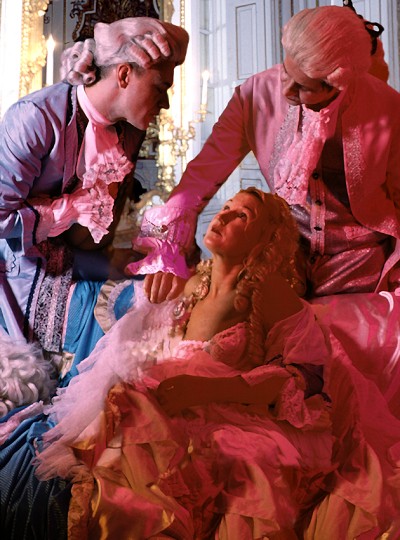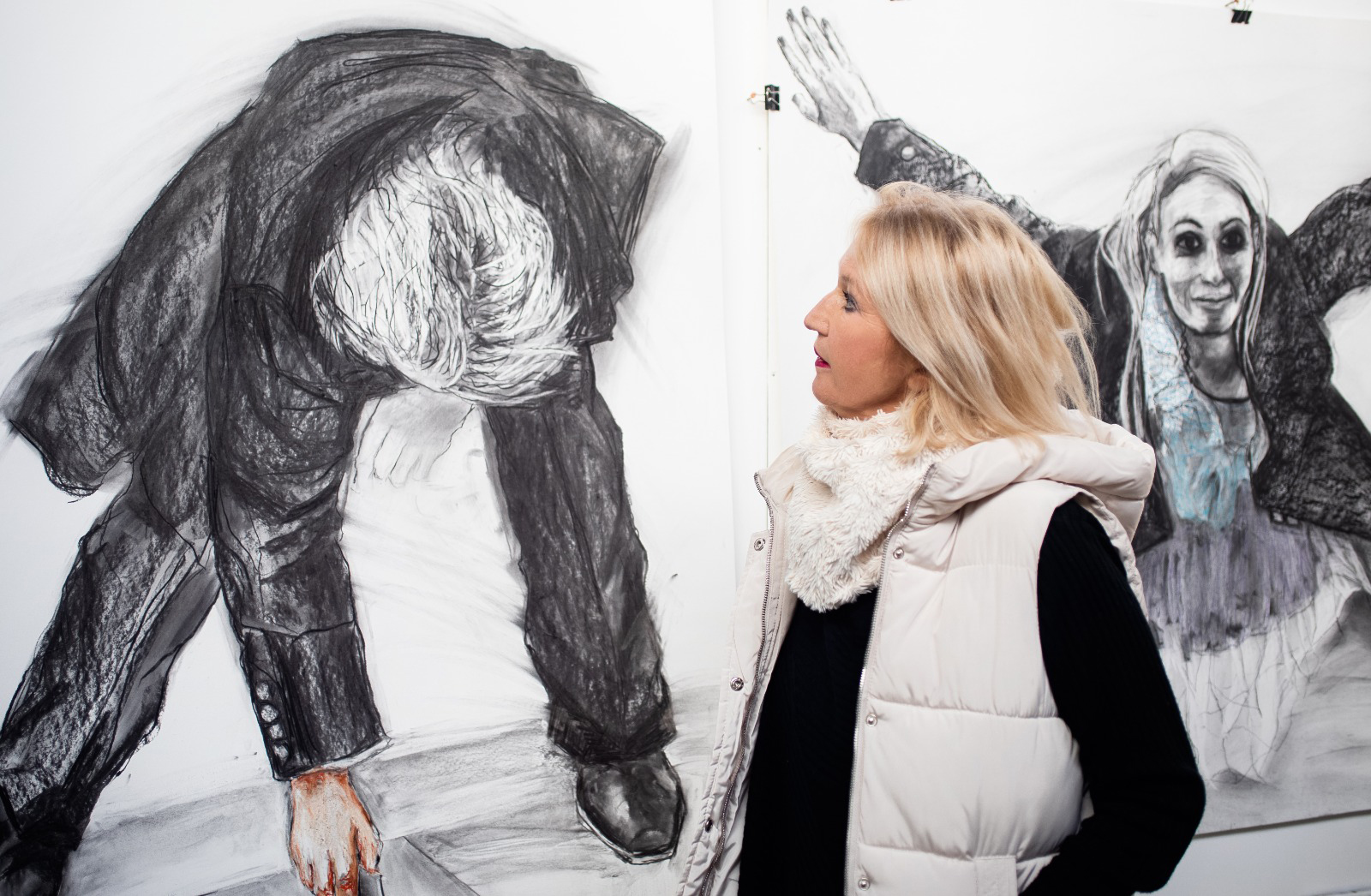

For this exhibition the artist had to respond to the V&A’s collection in some form of digital output. My research of the collection was to analyse old methods in relation to new technologies. Using photo-shop, digital print on fabric and digital embroidery, I responded to the Devonshire tapestries (in particular to the one of ‘Susanna & the Elders’), the Melville bed, the 18th Century costumes and embroideries, and the engraving and embroidery of ‘The conversion of Saint Paul’ after the painting by Rubens. I recreated the narrative of ‘Susanna & the Elders’ showing how she overcame the burden of her choices put upon her by the elders, who were finally punished. Susanna had been a popular subject in Renaissance paintings; depicted naked and rare to find a composition in which Susanna is clothed. However stories recounting the deeds of virtuous women were popular with English needle-workers of the 17th & 18th Century and they would depict her fully clothed. This influenced my choice to transform this scene into an 18th Century period, one of prosperity and flamboyancy especially within the upper classes. Working along side two male actors, I became Susanna and depicted her as a more autonomous woman faced with choices in an era of increased sexual freedom. A large digital print on viscose was presented as a wall hanging along side banners of digital embroideries, inspired by 18th Century decorative motifs found on clothing and furnishing, used to symbolize the main themes of the story. For example the Melville bed, a baroque bed not intended for regular use, but a symbol of wealth and noble rank. As Susanna was married to a respected wealthy noble man, her reputation was at great risk from the elders, giving them more power to succeed in the bribe.
(funding Camberwell College of Art, AHRB, Loughborough University).

